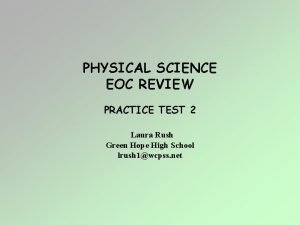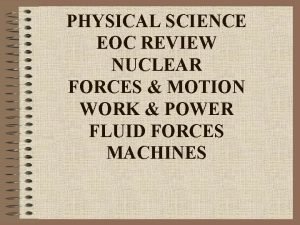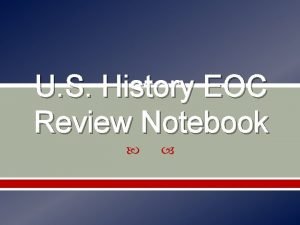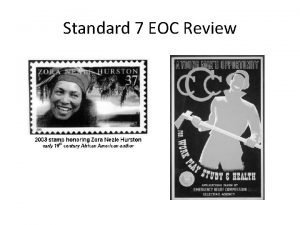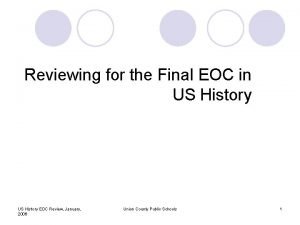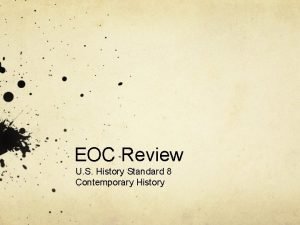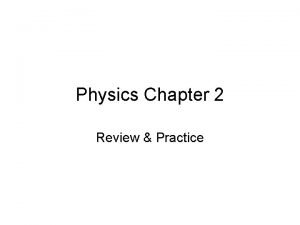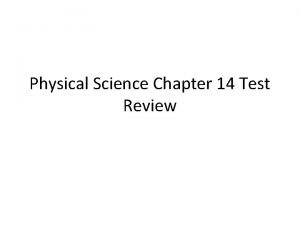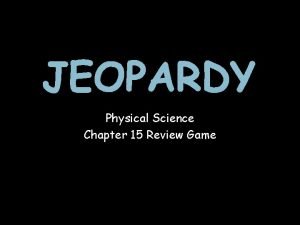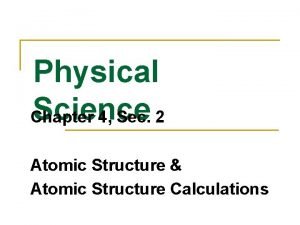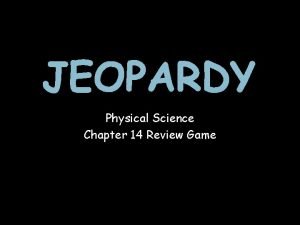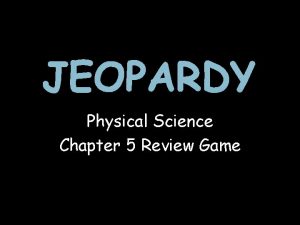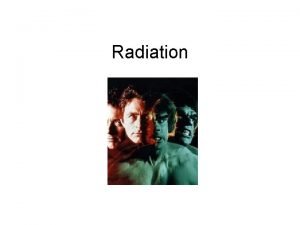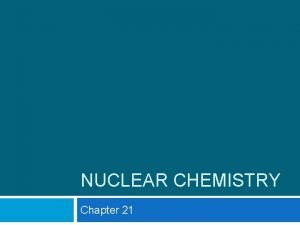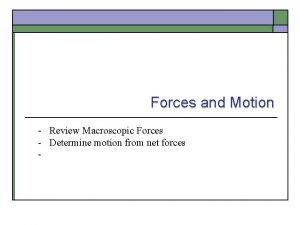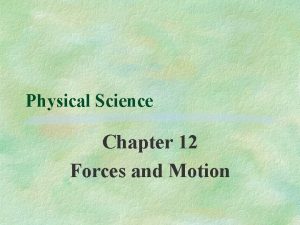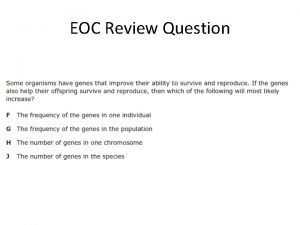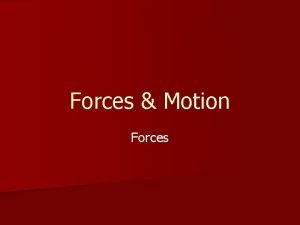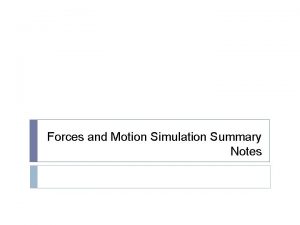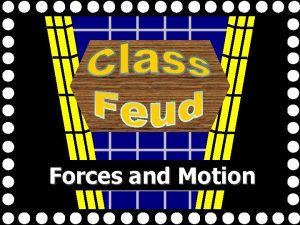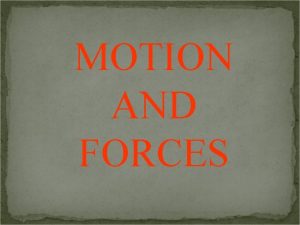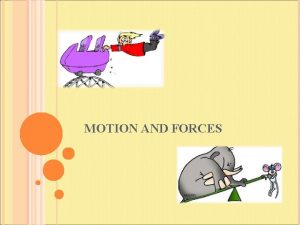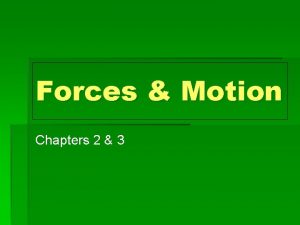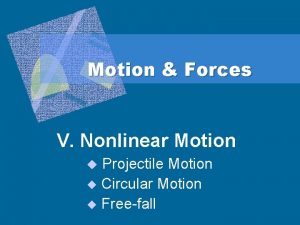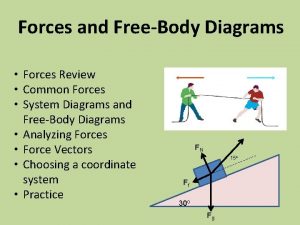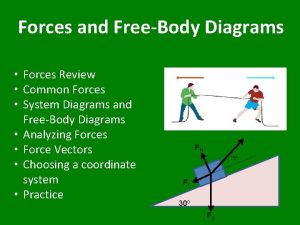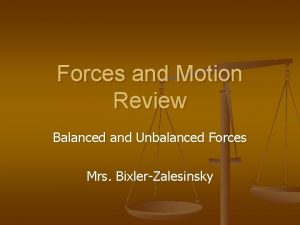PHYSICAL SCIENCE EOC REVIEW NUCLEAR FORCES MOTION WORK






































- Slides: 38

PHYSICAL SCIENCE EOC REVIEW NUCLEAR FORCES & MOTION WORK & POWER FLUID FORCES MACHINES

EOC REVIEW NUCLEAR ENERGY • Elements that have the same atomic numbers but different atomic masses are called A. ions B. nonmetals C. metalloids D. isotopes • ANSWER: D

EOC REVIEW NUCLEAR ENERGY • When a radioactive element releases radiation and changes to a different element, it is said to undergo A. a physical change B. radioactive decay C. a chemical change D. atomic fusion • ANSWER: B

EOC REVIEW NUCLEAR ENERGY • An alpha particle is a A. helium nucleus B. hydrogen nucleus C. helium atom D. hydrogen atom • ANSWER: A

EOC REVIEW NUCLEAR ENERGY • High-speed electrons emitted from the nuclei of atoms are called A. beta particles B. gamma rays C. alpha particles D. ions • ANSWER: A

EOC REVIEW NUCLEAR ENERGY • A sheet of aluminum can stop A. gamma rays B. gamma rays and alpha particles C. alpha particles and beta particles D. beta particles and gamma rays • ANSWER: C

EOC REVIEW NUCLEAR ENERGY • Gamma rays are most similar to A. radio waves B. visible light waves C. sound waves D. X rays • ANSWER: D

EOC REVIEW NUCLEAR ENERGY • When a uranium-238 atom decays, it emits an alpha particle. The atomic mass of the new atom formed is A. decreased by 2 B. increased by 4 C. decreased by 4 D. increased by 2 • ANSWER: C

EOC REVIEW NUCLEAR ENERGY • The equation E = mc 2 was proposed by A. Lawrence B. Newton C. Rutherford D. Einstein • ANSWER: D

EOC REVIEW FORCES • A push or pull exerted on an object is known as A. energy B. force C. charge D. magnetism • ANSWER: B

EOC REVIEW FORCES • Of the following, the example that does not create a force is A. magnetism B. gravity C. electrical charges D. velocity • ANSWER: D

EOC REVIEW FORCES • When several forces act on an object and the object does not move, the forces are said to be A. balanced B. unbalanced C. stable D. unstable • ANSWER: A

EOC REVIEW FORCES • A force that is exerted by gravity on the mass of an object is called A. density B. volume C. weight D. specific gravity • ANSWER: C

EOC REVIEW FORCES • Of the following, the one that is NOT a scalar quantity is A. density B. volume C. velocity D. mass • ANSWER: C

EOC REVIEW FORCES • When a vector represents a force, the length of the vector tells us the A. magnitude B. direction C. magnitude and direction D. force • ANSWER: A

EOC REVIEW FORCES • A single force that results from a combination of several forces is called A. a component B. a vector C. an equilibrant D. a resultant • ANSWER: D

EOC REVIEW FORCES • When two forces act on an object in the same direction, the resultant force is equal to A. the difference between the forces B. the sum of the forces C. the product of the forces D. the ratio of the forces • ANSWER: B

EOC REVIEW FORCES • When two forces act on an object in opposite directions, the resultant force is equal to the A. sum of the forces B. product of the forces C. difference between the forces D. ratio of the forces • ANSWER: C

EOC REVIEW FORCES • When balanced forces act on an object and do not move it, the object is said to be in a state of A. equilibrium B. stability C. instability D. torque • ANSWER: A

EOC REVIEW FORCES • A book lying flat on a table is said to be in a state of A. unstable equilibrium B. stable equilibrium C. equality D. inertia • ANSWER: B

EOC REVIEW WORK & MACHINES • Work is defined as the product of A. force and weight B. energy and height C. force and energy D. force and distance • ANSWER: D

EOC REVIEW WORK & MACHINES • In the metric system of measurement, the unit of work is the A. foot-pound B. pound-foot C. watt D. newton-meter • ANSWER: D

EOC REVIEW WORK & MACHINES • The rate of doing work is called A. power B. energy C. effort D. mechanical advantage • ANSWER: A

EOC REVIEW FLUID FORCES • The term fluid applies A. only to liquids B. only to gases C. only to solids D. to liquids and gases • ANSWER: D

EOC REVIEW FLUID FORCES • Density is determined by the formula A. m/v B. v/m C. v x v D. m + v • ANSWER: A

EOC REVIEW FLUID FORCES • An object with a mass of 20 grams and a volume of 4 cubic centimeters has a density of A. 16 grams per cubic centimeter B. 5 grams per cubic centimeter C. 10 pounds per cubic foot D. 10 grams per cubic centimeter • ANSWER: B

EOC REVIEW FORCES & MOTION • A change in position relative to a body assumed to be a rest is called A. motion B. momentum C. inertia D. acceleration • ANSWER: A

EOC REVIEW FORCES & MOTION • Of the following, the term that is not used to describe motion is A. distance B. time C. acceleration D. force • ANSWER: D

EOC REVIEW FORCES & MOTION • A term that is a vector quantity is A. distance B. direction C. velocity D. speed • ANSWER: C

EOC REVIEW FORCES & MOTION • The average velocity can be determined from the formula A. time/distance B. time/acceleration C. distance/time D. distance x time • ANSWER: C

EOC REVIEW FORCES & MOTION • The distance covered by a car traveling at an average velocity of 50 mph for 5 hours is A. 10 miles B. 250 miles C. 55 miles D. 45 miles • ANSWER: B

EOC REVIEW FORCES & MOTION • Final velocity is equal to A. v/t B. t/a C. a/t D. a x t • ANSWER: D

EOC REVIEW FORCES & MOTION • Consider a ball rolling down an inclined lane: The greatest acceleration occurs when the plane is at an angle of A. 60 o B. 0 o C. 90 o D. 30 o • ANSWER: C

EOC REVIEW FORCES & MOTION • A. B. C. D. That a body at rest tends to remain at rest and a body in motion tends to remain in motion unless acted upon by an unbalanced force is stated in the law of motion inertia momentum action and reaction • ANSWER: B

EOC REVIEW FORCES & MOTION • A moving bus comes to a sudden stop and the passengers lurch forward. This is an example of A. inertia B. momentum C. acceleration D. deceleration • ANSWER: A

EOC REVIEW FORCES & MOTION • As the force acting on an object decreases, the acceleration of the object A. increases B. decreases C. remains the same D. increases, then decreases • ANSWER: A

EOC REVIEW FORCES & MOTION • As the mass of an object increases, the acceleration of that object A. increases B. decreases C. remains the same D. increases, then decreases • ANSWER: B

EOC REVIEW FORCES & MOTION • The momentum of a body is the product of the mass of the body and its A. acceleration B. distance C. speed D. velocity • ANSWER: D
 Physical science eoc review
Physical science eoc review Physical science eoc review
Physical science eoc review Florida us history eoc review
Florida us history eoc review Pbs eoc review
Pbs eoc review Gilded age eoc blitz review
Gilded age eoc blitz review Us history eoc review notebook
Us history eoc review notebook These were assaults ordered by attorney general mitchell
These were assaults ordered by attorney general mitchell Us history staar eoc review
Us history staar eoc review Standard 7 eoc review
Standard 7 eoc review Hbs final exam practice test
Hbs final exam practice test Mr raymond civics
Mr raymond civics English eoc review
English eoc review Civics eoc review
Civics eoc review Georgia biology standards
Georgia biology standards Biology 10-day eoc review
Biology 10-day eoc review Us history
Us history Day 1 us history eoc review
Day 1 us history eoc review Us history eoc review the great depression and the new deal
Us history eoc review the great depression and the new deal Gilded age eoc blitz review
Gilded age eoc blitz review 8 contemporary court
8 contemporary court Lesson 15 nuclear quest nuclear reactions
Lesson 15 nuclear quest nuclear reactions Fisión nuclear vs fision nuclear
Fisión nuclear vs fision nuclear Chapter review motion part a vocabulary review answer key
Chapter review motion part a vocabulary review answer key Physics chapter 2 review answers
Physics chapter 2 review answers Chapter 4 work and energy section 1 work and machines
Chapter 4 work and energy section 1 work and machines Chapter 14 test physical science
Chapter 14 test physical science Chapter 15 review physical science
Chapter 15 review physical science Physical science chapter 4 review
Physical science chapter 4 review Chapter 14 review physical science
Chapter 14 review physical science Physical science jeopardy
Physical science jeopardy Chapter 5 review physical science
Chapter 5 review physical science Physical science chapter 6 review answers
Physical science chapter 6 review answers Chapter 16 review physical science
Chapter 16 review physical science Main branches of science
Main branches of science Natural science vs physical science
Natural science vs physical science Favourite subject
Favourite subject Nuclear chemistry review worksheet answer key
Nuclear chemistry review worksheet answer key Chapter 21 review nuclear chemistry
Chapter 21 review nuclear chemistry Bsa nuclear science merit badge
Bsa nuclear science merit badge
